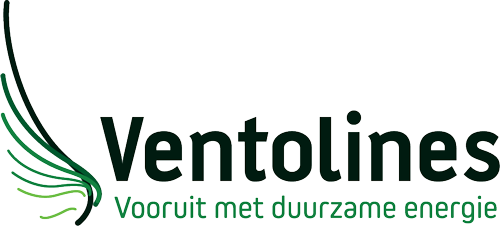Ventolines publishes final UNITED report on integrated solar and offshore wind
The integration of offshore wind farms and floating solar panels is gaining popularity, as it is a more efficient use of offshore space. This is also reflected in the regulations for wind farm tenders. Initiators are more likely to win a tender if they install a solar farm next to the wind farm.
This combination of functions has been the focus of the UNITED research project, partly funded by Horizon 2020, the European Union’s vast research and innovation program. The objective of this project is to combine activities that currently compete for space out at sea. Pilot projects are therefore being developed in European sea areas in several countries, with the objective of ‘ocean multi-use’.
In 2023, substantial efforts were undertaken by Ventolines as part of the UNITED project to produce a report on the integration of offshore wind and solar energy within the Dutch sector of the North Sea. This has led to a report that meticulously examines the legal opportunities and challenges relating to offshore wind and solar energy. We are thrilled to now be able to share insights from this report, delving into the legal and contractual implications of seamlessly integrating offshore floating solar farms into offshore wind farms.
In our report, we discussed six scenarios, exploring Standalone, Semi-standalone, and Integrated design concepts and distinguishing between Greenfield (new wind farms) and Brownfield (existing wind farms) development.
The current legal framework favors the integration of Greenfield offshore wind farms and solar farms over integration in Brownfield situations. This advantage arises because, in Greenfield situations, the solar farm can become a part of the tender procedure for the offshore wind farm. Brownfield scenarios face complexities due to concluded tender processes and potential conflicts with existing infrastructure.
Furthermore, current regulations prevent offshore solar farms from connecting directly to the grid. The only current option for offshore solar farms is to tie into the offshore wind farm’s grid connection. This dependence on the grid connection of the offshore wind farm leads to significant bankability issues, especially in scenarios where the wind farm ceases to be operational.
In addition, wind farms cannot be compelled to connect an offshore solar farm to their structure. This makes an offshore solar farm unfeasible without the cooperation of the offshore wind farm.
Finally, the Offshore Wind Energy Act is exclusively applicable to wind farms. Consequently, the current legal framework does not provide tender procedures for offshore solar farms. This makes it impossible for the government to differentiate between multiple parties applying for a permit for offshore solar.
To address these issues and challenges, we propose a comprehensive legislative package for integrated offshore projects. This transformative law, should encompass offshore solar farm area designations, integrated permitting processes, and conditions for brownfield integration with wind farms.
